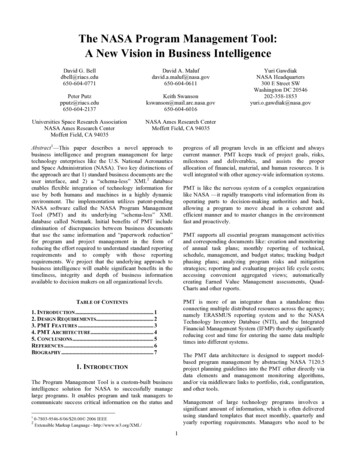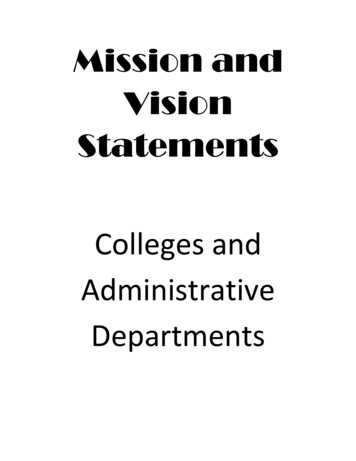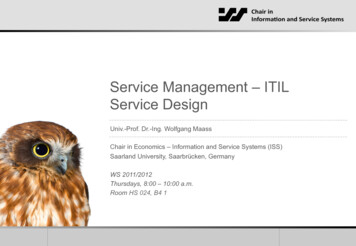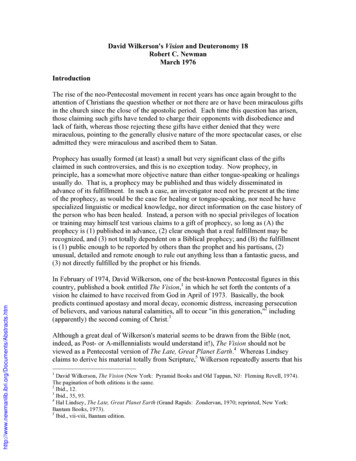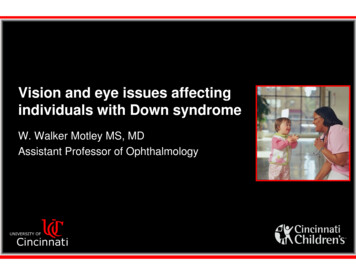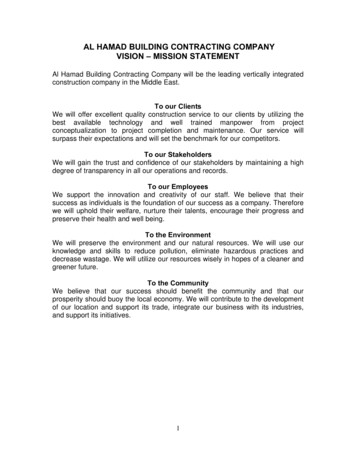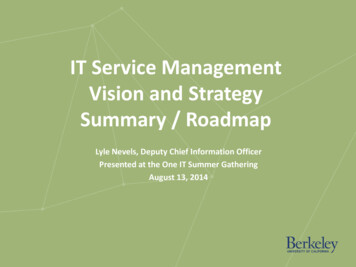
Transcription
IT Service ManagementVision and StrategySummary / RoadmapLyle Nevels, Deputy Chief Information OfficerPresented at the One IT Summer GatheringAugust 13, 2014
University Profile and MissionThe University of California at Berkeley strives to bea community dedicated to teaching, research andpublic service.Comprehensive academic excellence.Student success outside the classroom.Equity and inclusion.Sustainable funding model.World class administrative operations andinfrastructure renewal. Basic and applied research.
What is ITSM?IT Service Management (ITSM) is a process-basedpractice intended to align the delivery of informationtechnology (IT) services with needs of the University,emphasizing benefits to customers.ITSM involves a paradigm shift from managing IT asstacks of individual components to focusing on thedelivery of end-to-end services using best practiceprocess models.
Why ITSM? Enhance / increase service level success. Align IT goals with those of the Units andDepartments we support. Make ‘Excellence in Service’ a part of our culture. Improve quality and reliability of IT services offered. Optimize resource utilization. Enforce collaboration across silos. Move from traditional supply-demand model tocustomer oriented processes and service valuecreation.
Core ITSM DisciplinesService SupportEnables effective IT ServicesBuilding blocks of all IT ionManagementSecurityIncidentManagementService LevelManagementCapacityManagementFinancialService Mgmt.LevelForIT ServicesManagementIT ServiceContinuity Mgmt.MgmtContinuityService DeliveryService DeliveryManagement of the IT rvice SupportService Desk
Recommended ITSM Roadmap: a Four Year Journey
Vision for One IT and the ITSM Program“UC Berkeley has a fully integrated IT Community”The objectives that support this vision are: Clear roles and responsibilities are defined.IT has a well understood and mature governance model.Customers know how to get solutions.Customers have one place to go to get IT services.IT has a compelling and understandable story to tell business partners.Customers truly see the value that IT provides.IT leverages expertise outside of the department.Staff buy into the principles and practices of service management.IT is seen as a trusted business partner and advisor.There is clear prioritization for all activities.Customers and users get the same positive experience regardless ofwhich IT organization they approach.
What does Success Look Like?Large scale adoption of ITSM principles and practices.The ITSM processes have achieved sustainability.There is significant cross department collaboration.Customer satisfaction is rising.There is a positive customer response when interactingwith IT. IT is the preferred campus resource; thecustomer comes to us for help. Each process shows clear value to the customer. Show marked improvement in incident closer rates(MTTR) and have customer facing reports anddashboards as evidence.
Steps Taken ITIL Foundations Training ( 120 staff) Vision and Strategy session completed Multi-year roadmap developed Budget identified and committed ITSM Director position posted, interviews underway Structured working discussions with ThirdSky and ITLG IT Governance IT Portfolio Management IT Service Definitions
Next Steps Establish a practice for how we engage with ourpeers across the institution so that we realize thevision of our ITSM program. Hire an ITSM Director. Complete detailed steps remaining for ITGovernance, Service Portfolio and ServiceDefinition work. Determine next set of ITSM framework sessions. Develop overall communications / marketingstrategy.
Breakout SessionPlease answer and report back on the following questions: ITSM planning within Central IT is currently focused on Governance, PortfolioManagement, Service Catalog development and other service management andservice assurance measures. With your interests in mind, where do you see thevalue in IT Service Management and how do these elements (e.g. governance,portfolio management, service catalog) resonate with you? Our process around ITSM is a long-term and complex set of steps. What activities,decisions or deployments should trigger communications or community input? What isthe best way to get input or communicate with University staff? Service catalogs and service management systems were highlighted as key needs in theITSM deployment during the IT Summit. What features or elements of these systems areimportant from your perspective and how might you use a centralized service catalog orticketing system in your own unit? What features would be required to have you adoptsuch a system?
IT Service Management (ITSM) is a process-based practice intended to align the delivery of information technology (IT) services with needs of the University, emphasizing benefits to customers. ITSM involves a paradigm shift from managing IT as stacks of individual components to focusing on
